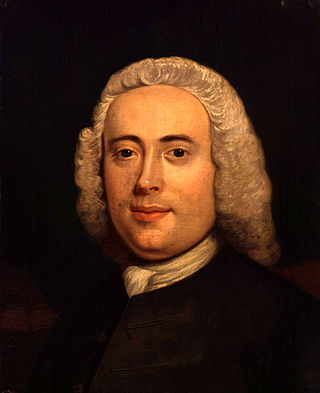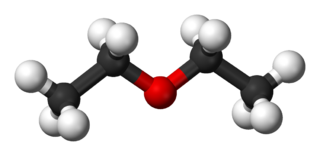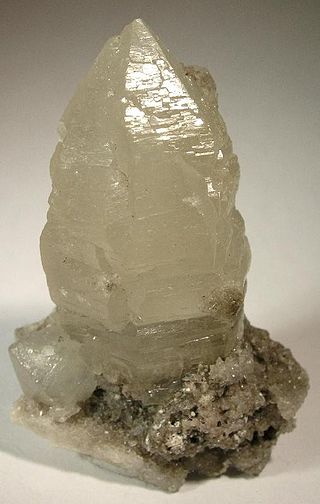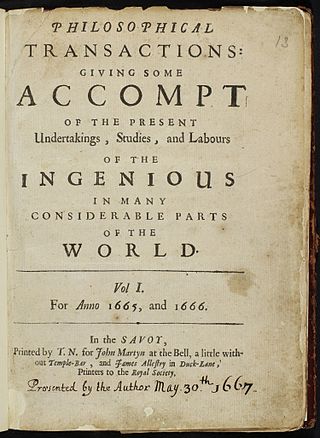Related Research Articles

Sir Humphry Davy, 1st Baronet, was a British chemist and inventor who invented the Davy lamp and a very early form of arc lamp. He is also remembered for isolating, by using electricity, several elements for the first time: potassium and sodium in 1807 and calcium, strontium, barium, magnesium and boron the following year, as well as for discovering the elemental nature of chlorine and iodine. Davy also studied the forces involved in these separations, inventing the new field of electrochemistry. Davy is also credited with discovering clathrate hydrates.

William Hyde Wollaston was an English chemist and physicist who is famous for discovering the chemical elements palladium and rhodium. He also developed a way to process platinum ore into malleable ingots.

Daines Barrington, FRS, FSA was an English lawyer, antiquary and naturalist. He was one of the correspondents to whom Gilbert White wrote extensively on natural history topics. Barrington served as a Vice President of the Royal Society and wrote on a range of topics related to the natural sciences including early ideas and scientific experimentation on the learning of songs by young birds. He designed a standard format for the collection of information about weather, the flowering of plants, the singing of birds and other annual changes that was also used by Gilbert White. He also wrote on child geniuses including Mozart, who at the age of nine had visited England.
The year 1821 in science and technology involved some significant events, listed below.
The year 1834 in science and technology involved some significant events, listed below.
The year 1710 in science and technology involved some significant events.

John Canton was a British physicist. He was born in Middle Street Stroud, Gloucestershire, to a weaver, John Canton and Esther. As a schoolboy, he became the first person to determine the latitude of Stroud, while making a sundial. The sundial caught the attention of many, including Dr Henry Miles, a Stroud-born Fellow of the Royal Society. Miles encouraged Canton to leave Gloucestershire to become a trainee teacher for Samuel Watkins, the headmaster of a Nonconformist school in Spital Square, London, with whom he ultimately entered into partnership.

Diethyl ether, or simply ether, is an organic compound with the chemical formula (CH3CH2)2O, sometimes abbreviated as Et2O. It is a colourless, highly volatile, sweet-smelling, extremely flammable liquid. It belongs to the ether class of organic compounds. It is a common solvent. It was formerly used as a general anesthetic.

Witherite is a barium carbonate mineral, BaCO3, in the aragonite group. Witherite crystallizes in the orthorhombic system and virtually always is twinned. The mineral is colorless, milky-white, grey, pale-yellow, green, to pale-brown. The specific gravity is 4.3, which is high for a translucent mineral. It fluoresces light blue under both long- and short-wave UV light, and is phosphorescent under short-wave UV light.

Peter Woulfe (1727–1803) was an Anglo-Irish chemist and mineralogist. He first had the idea that wolframite might contain a previously undiscovered element (tungsten).

Philosophical Transactions of the Royal Society is a scientific journal published by the Royal Society. In its earliest days, it was a private venture of the Royal Society's secretary. It was established in 1665, making it the second journal in the world exclusively devoted to science, after the Journal des sçavans, and therefore also the world's longest-running scientific journal. It became an official society publication in 1752. The use of the word philosophical in the title refers to natural philosophy, which was the equivalent of what would now be generally called science.

Ethyl sulfate, also known as sulfovinic acid, is an organic chemical compound used as an intermediate in the production of ethanol from ethylene. It is the ethyl ester of sulfuric acid.
Christopher Middleton was a British navigator with the Hudson's Bay Company and Royal Navy officer. He was elected a Fellow of the Royal Society on 7 April 1737.

Sir Charles Brian Blagden FRS was an English physician and chemist. He served as a medical officer in the Army (1776–1780) and later held the position of Secretary of the Royal Society (1784–1797). Blagden won the Copley Medal in 1788 and was knighted in 1792.

Lord Morton’s mare was an equid hybrid and once an often-noticed example in the history of evolutionary theory.
Augustus Matthiessen, FRS, the son of a merchant, was a British chemist and physicist who obtained his PhD in Germany at the University of Gießen in 1852 with Johann Heinrich Buff. He then worked with Robert Bunsen at the University of Heidelberg from 1853 to 1856. His work in this period included the isolation of calcium and strontium in their pure states. He then returned to London and studied with August Wilhelm von Hofmann from 1857 at the Royal College of Chemistry, and set up his own research laboratory at 1 Torrington Place, Russell Square, London. He was elected a Fellow of the Royal Society (FRS) in 1861. He worked as a lecturer on chemistry at St Mary's Hospital, London, from 1862 to 1868, and then at St Bartholomew's Hospital, London, from 1868. His research was chiefly on the constitution of alloys and opium alkaloids. He contributed to both physics and chemistry. For his work on metals and alloys, he was awarded the Royal Society's Royal Medal in 1869.

Throughout recorded history, attempts at producing a state of general anesthesia can be traced back to the writings of ancient Sumerians, Babylonians, Assyrians, Egyptians, Indians, and Chinese. Despite significant advances in anatomy and surgical technique during the Renaissance, surgery remained a last-resort treatment largely due to the pain associated with it. However, scientific discoveries in the late 18th and early 19th centuries paved the way for the development of modern anesthetic techniques.
Johann Heinrich Winkler' or Winckler was a German physicist and philosopher.
Henry Hennell FRS was an English chemist.
References
- ↑ Royal Society Selected Fellows' details [ permanent dead link ]
- ↑ Partington, James R. (1961). A History of Chemistry. Vol. 2. London: Macmillan. p. 546.
- 1 2 C. Mortimer (1741). "Abstracts of the Original Papers Communicated to the Royal Society by Sigismond Augustus Frobenius, M. D. concerning His Spiritus Vini Aethereus: Collected by C. Mortimer, M. D. Secr. R. S." Phil. Trans. 41 (461): 864–870. doi: 10.1098/rstl.1739.0161 .[ permanent dead link ]
- ↑ Dr. Frobenius (1729). "An Account of a Spiritus Vini Æthereus, Together with Several Experiments Tried". Phil. Trans. 36 (413): 283–289. doi:10.1098/rstl.1729.0045. S2CID 186207852.
- ↑ Ladenburg, Albert (1878). Allgemeine Deutsche Biographie (in German). Vol. 8. Bavarian Academy of Sciences and Humanities. p. 125.